Image of 1966 Chevrolet Malibu, Note: These illustrations use artistic license and may differ from actual historical models.
Performance Metrics
Fundamental Metrics
Emotional Appeal
MMP Rating
| Engine Specifications | |
|---|---|
| Engine Options: | 230 CID I6, 283 CID V8, 327 CID V8 |
| Displacement Range: | 230-327 cubic inches |
| Horsepower Range: | 140-350 hp |
| Torque: | 220-360 lb-ft |
| Compression Ratio: | 8.5:1 - 11.0:1 |
| Ignition System: | Conventional breaker-point ignition system |
| Cooling System: | Liquid cooled |
| Performance Specifications | |
| 0-60 Time: | 8-10 seconds |
| 1/4 Mile Time: | 15-17 seconds |
| Top Speed: | 120-130 mph |
| Transmission and Drive | |
| Drive Type: | Rear-wheel drive |
| Transmission Type: | 3-speed manual, 4-speed manual, 2-speed Powerglide automatic |
| Fuel and Efficiency | |
| Fuel System Type: | Carburetor |
| MPG: | 10-15 mpg |
| Dimensions and Brakes | |
| Brakes: | Drum brakes |
| Wheelbase: | 115 inches |
| Weight: | 3,200-3,600 lbs |
Note: Specifications for classic cars are given to the best of our ability, considering the limited and variant data available.
1966 Chevrolet Malibu: A Timeless Classic
The 1966 Chevrolet Malibu stands as a testament to American automotive ingenuity and the golden era of muscle cars. Born from the fervent competition of the 1960s auto industry, this iconic vehicle emerged as a stylish and affordable option for the burgeoning youth market. Chevrolet, a division of General Motors, crafted the Malibu with an eye for both performance and aesthetics, ensuring it would leave an indelible mark on car culture. A unique fact that car enthusiasts may find intriguing is that the '66 Malibu helped solidify Chevrolet's reputation for producing vehicles that could be both family-friendly and performance-oriented.
Design and Innovation
The exterior of the 1966 Malibu was a blend of sleek lines and aggressive stances, with a front grille that commanded attention and a profile that promised speed. Inside, the cabin boasted a level of craftsmanship that spoke to Chevrolet's dedication to quality. Materials ranged from durable vinyl to plush cloth, with options for bucket seats and center consoles. Technological features such as an AM radio and optional air conditioning were considered luxuries at the time. The color palette included hues like Marina Blue, Tropic Turquoise, and Lemonwood Yellow, with Regal Red being a particularly popular choice among enthusiasts.
Body styles varied from a two-door coupe and convertible to a more practical four-door sedan and station wagon. The most iconic version was arguably the two-door Sport Coupe, which epitomized the muscle car image that many associate with the Malibu today.
Historical Significance
The 1966 Malibu's impact on automotive design was profound. It offered a combination of style, power, and affordability that set it apart from competitors. Its clean lines and balanced proportions influenced subsequent generations of Chevrolet vehicles and became a benchmark for American car design.
Performance and Handling
Under the hood, the '66 Malibu could be equipped with a range of engines, from a modest inline-six to a robust V8. Top speed and acceleration varied by engine choice, but V8 models could propel the Malibu from 0-60 mph in under 8 seconds—a respectable figure for its time. Handling was characterized by responsive steering and a suspension tuned for comfort rather than cornering precision. Drivers often recount the visceral experience of piloting the Malibu—the rumble of the engine, the smoothness of the ride, and an overall sense of connection with this mechanical marvel.
Ownership Experience
The 1966 Malibu served various roles from daily commuting to weekend drag racing. Its reliability was one of its strong suits, making it an accessible classic car for enthusiasts today. Maintenance is straightforward for those familiar with vintage vehicles, though some parts may be harder to come by due to their age.
Fun Facts
The '66 Malibu has graced many collections, including those of celebrities like Jay Leno. While not known for breaking speed records, it certainly broke sales records in its day. Criticisms were few but did include desires for improved fuel economy—a common theme among muscle cars of that era.
Collector's Information
Today's collectors might find a well-preserved 1966 Malibu valued anywhere between $20,000 to $50,000 or more depending on condition, originality, and specific model variants. Production numbers were high in its heyday; however, finding one in pristine condition can be challenging. The market trend shows appreciation in value for this classic piece of Americana.
Conclusion
The 1966 Chevrolet Malibu is more than just metal, rubber, and glass—it's a symbol of American culture and innovation during one of the most exciting eras in automotive history. Its blend of style, performance, and practicality continues to resonate with car enthusiasts around the world.
1966 Chevrolet Malibu Catalog of Parts
 1966 Chevrolet Malibu Door Lock Pillar Seal-ALP 5000Door Lock Pillar Seal. Used on lower leading edge of quarter window. Highly detailed, made with steel cores. Pair R&L
1966 Chevrolet Malibu Door Lock Pillar Seal-ALP 5000Door Lock Pillar Seal. Used on lower leading edge of quarter window. Highly detailed, made with steel cores. Pair R&L 1966 Chevrolet Malibu Rear Door Lock Pillar Seal for 4-Door Hardtops. Pair-ALP 5000-ARear Door Lock Pillar Seal for 4-Door Hardtops. Pair
1966 Chevrolet Malibu Rear Door Lock Pillar Seal for 4-Door Hardtops. Pair-ALP 5000-ARear Door Lock Pillar Seal for 4-Door Hardtops. Pair 1966 Chevrolet Malibu Rear Quarter Window Seal for Convertibles. Pair-ALP 5500Rear Quarter Window Seal for Convertibles. Pair
1966 Chevrolet Malibu Rear Quarter Window Seal for Convertibles. Pair-ALP 5500Rear Quarter Window Seal for Convertibles. Pair 1966 Chevrolet Malibu Accelerator Pedal Pad with flange-AP 31-AAccelerator Pedal Pad with flange, made of rubber with steel core. Also
1966 Chevrolet Malibu Accelerator Pedal Pad with flange-AP 31-AAccelerator Pedal Pad with flange, made of rubber with steel core. Also  1966 Chevrolet Malibu Accelerator Pedal Pad without flange-AP 31-BAccelerator Pedal Pad without flange, made of rubber with steel core. Also
1966 Chevrolet Malibu Accelerator Pedal Pad without flange-AP 31-BAccelerator Pedal Pad without flange, made of rubber with steel core. Also 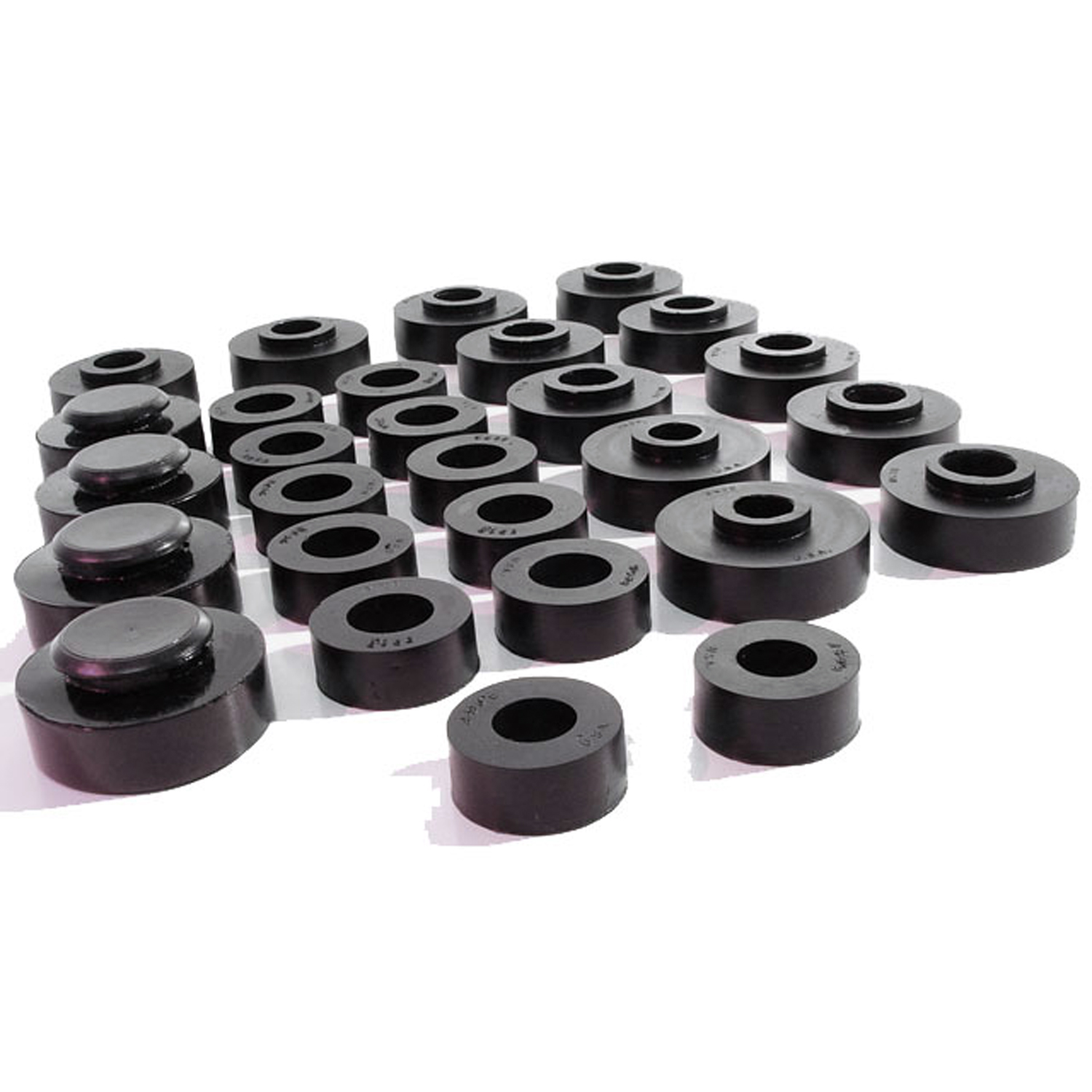 1966 Chevrolet Malibu Body Cushion Kit. 28 piece set.-BCK 7Body Cushion Kit. 28 piece set.
1966 Chevrolet Malibu Body Cushion Kit. 28 piece set.-BCK 7Body Cushion Kit. 28 piece set. 1966 Chevrolet Malibu Body Cushion Kit for Convertibles. 32 piece set.-BCK 7-ABody Cushion Kit for Convertibles. 32 piece set.
1966 Chevrolet Malibu Body Cushion Kit for Convertibles. 32 piece set.-BCK 7-ABody Cushion Kit for Convertibles. 32 piece set. 1966 Chevrolet Malibu Shock Absorber Grommet. 1" bottom O.D., 3/4" high-BN 1Shock Absorber Grommet. 1" bottom O.D., 3/4" high., with 7/16" I.D. Each
1966 Chevrolet Malibu Shock Absorber Grommet. 1" bottom O.D., 3/4" high-BN 1Shock Absorber Grommet. 1" bottom O.D., 3/4" high., with 7/16" I.D. Each 1966 Chevrolet Malibu Front coil-spring insulator-BN 110Front coil-spring insulator. Fits '41-'60 Oldsmobile and '50-'83 GM passenger models. 5-3/8 in. OD x 3-3/4 in. ID x 3/4 in. high with 13/16 in. wide bottom flange 1/4" thick, 12 flutes. Each.
1966 Chevrolet Malibu Front coil-spring insulator-BN 110Front coil-spring insulator. Fits '41-'60 Oldsmobile and '50-'83 GM passenger models. 5-3/8 in. OD x 3-3/4 in. ID x 3/4 in. high with 13/16 in. wide bottom flange 1/4" thick, 12 flutes. Each. 1966 Chevrolet Malibu Front Stabilizer End Repair Kit-BNK 21Front Stabilizer End Repair Kit. 22-piece set for two stabilizer bars. Contains all rubber bushings, washers, bolts and nuts, enough for one front end. Set
1966 Chevrolet Malibu Front Stabilizer End Repair Kit-BNK 21Front Stabilizer End Repair Kit. 22-piece set for two stabilizer bars. Contains all rubber bushings, washers, bolts and nuts, enough for one front end. Set 1966 Chevrolet Malibu Butyl Glass Setting Tape-BT 1Butyl Glass Setting Tape. Used to install windshields and backlights. Superior sealing properties. 5/16" wide X 15' long. Each
1966 Chevrolet Malibu Butyl Glass Setting Tape-BT 1Butyl Glass Setting Tape. Used to install windshields and backlights. Superior sealing properties. 5/16" wide X 15' long. Each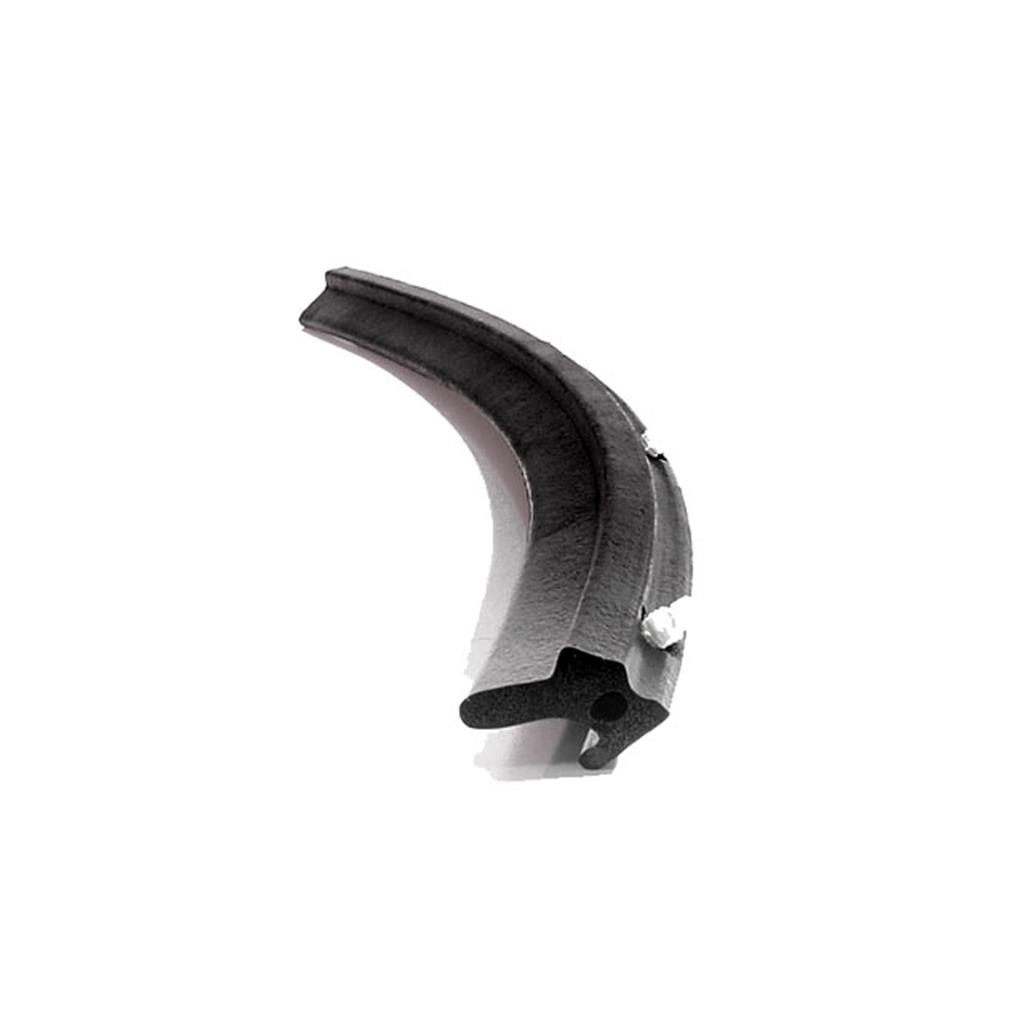 1966 Chevrolet Malibu Convertible Top Windshield Header Seal-C/LP 40-GConvertible Top Windshield Header Seal. Clips installed every 3-5/8". Made of soft, black, skin-covered sponge. Sold by the foot.
1966 Chevrolet Malibu Convertible Top Windshield Header Seal-C/LP 40-GConvertible Top Windshield Header Seal. Clips installed every 3-5/8". Made of soft, black, skin-covered sponge. Sold by the foot. 1966 Chevrolet Malibu Brake Pedal Pad-CB 101-ABrake Pedal Pad. For power brakes or automatic transmissions. 4-3/4" wide X 2-3/4' long. Each
1966 Chevrolet Malibu Brake Pedal Pad-CB 101-ABrake Pedal Pad. For power brakes or automatic transmissions. 4-3/4" wide X 2-3/4' long. Each 1966 Chevrolet Malibu Power Brake Pedal Pad. For cars with manual transmission-CB 101-CPower Brake Pedal Pad. For cars with manual transmission. Nice reproduction. 3-5/8" wide X 2-5/8" long. Each
1966 Chevrolet Malibu Power Brake Pedal Pad. For cars with manual transmission-CB 101-CPower Brake Pedal Pad. For cars with manual transmission. Nice reproduction. 3-5/8" wide X 2-5/8" long. Each 1966 Chevrolet Malibu Park Brake Pedal Pad. 2-9/16" wide. Each-CB 99-APark Brake Pedal Pad. 2-9/16" wide. Each
1966 Chevrolet Malibu Park Brake Pedal Pad. 2-9/16" wide. Each-CB 99-APark Brake Pedal Pad. 2-9/16" wide. Each 1966 Chevrolet Malibu Auto Brake Pedal Pad. 5-7/8" wide. Each-CB 99-BAuto Brake Pedal Pad. 5-7/8" wide. Each
1966 Chevrolet Malibu Auto Brake Pedal Pad. 5-7/8" wide. Each-CB 99-BAuto Brake Pedal Pad. 5-7/8" wide. Each 1966 Chevrolet Malibu Clutch and Brake Pedal Pads. 3-3/4" wide. Pair-CB 99-DClutch and Brake Pedal Pads. 3-3/4" wide. Pair
1966 Chevrolet Malibu Clutch and Brake Pedal Pads. 3-3/4" wide. Pair-CB 99-DClutch and Brake Pedal Pads. 3-3/4" wide. Pair 1966 Chevrolet Malibu Park Brake Pedal Pad. 2-3/8" wide. Each-CB 99-EPark Brake Pedal Pad. 2-3/8" wide. Each
1966 Chevrolet Malibu Park Brake Pedal Pad. 2-3/8" wide. Each-CB 99-EPark Brake Pedal Pad. 2-3/8" wide. Each 1966 Chevrolet Malibu Auto Brake Pedal Pad. Nice reproduction. 5-3/4" wide-CB 99-GAuto Brake Pedal Pad. Nice reproduction. 5-3/4" wide. Each
1966 Chevrolet Malibu Auto Brake Pedal Pad. Nice reproduction. 5-3/4" wide-CB 99-GAuto Brake Pedal Pad. Nice reproduction. 5-3/4" wide. Each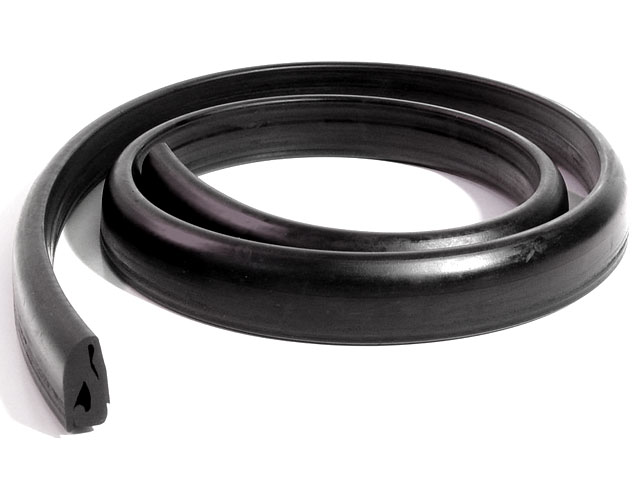 1966 Chevrolet Malibu Hood to Cowl Seal, 64-67 GM A Body, Except Oldsmobile A Body, Each-CS 4Hood to Cowl Seal, 64-67 GM A Body, Except Oldsmobile A Body (F85, Cutlass, etc.), Each. These seals protect the rear end of the engine compartment from the dust and debris that can fall from the windshield into the engine compartment.
1966 Chevrolet Malibu Hood to Cowl Seal, 64-67 GM A Body, Except Oldsmobile A Body, Each-CS 4Hood to Cowl Seal, 64-67 GM A Body, Except Oldsmobile A Body (F85, Cutlass, etc.), Each. These seals protect the rear end of the engine compartment from the dust and debris that can fall from the windshield into the engine compartment. 1966 Chevrolet Malibu Windshield Pillar Post Seals for Convertibles-CZ 8107Windshield Pillar Post Seals for Convertibles. Two pieces, 25" long. Pair
1966 Chevrolet Malibu Windshield Pillar Post Seals for Convertibles-CZ 8107Windshield Pillar Post Seals for Convertibles. Two pieces, 25" long. Pair 1966 Chevrolet Malibu Door Bumper. 1-1/8" high X 15/16" wide X 7/8" long. Each-DB 33Door Bumper. 1-1/8" high X 15/16" wide X 7/8" long. Each
1966 Chevrolet Malibu Door Bumper. 1-1/8" high X 15/16" wide X 7/8" long. Each-DB 33Door Bumper. 1-1/8" high X 15/16" wide X 7/8" long. Each 1966 Chevrolet Malibu Door Bumper. Snap-in style. Two used per car-DB 43Door Bumper. Snap-in style. Two used per car. 1-1/8" high X 15/16" long. Each
1966 Chevrolet Malibu Door Bumper. Snap-in style. Two used per car-DB 43Door Bumper. Snap-in style. Two used per car. 1-1/8" high X 15/16" long. Each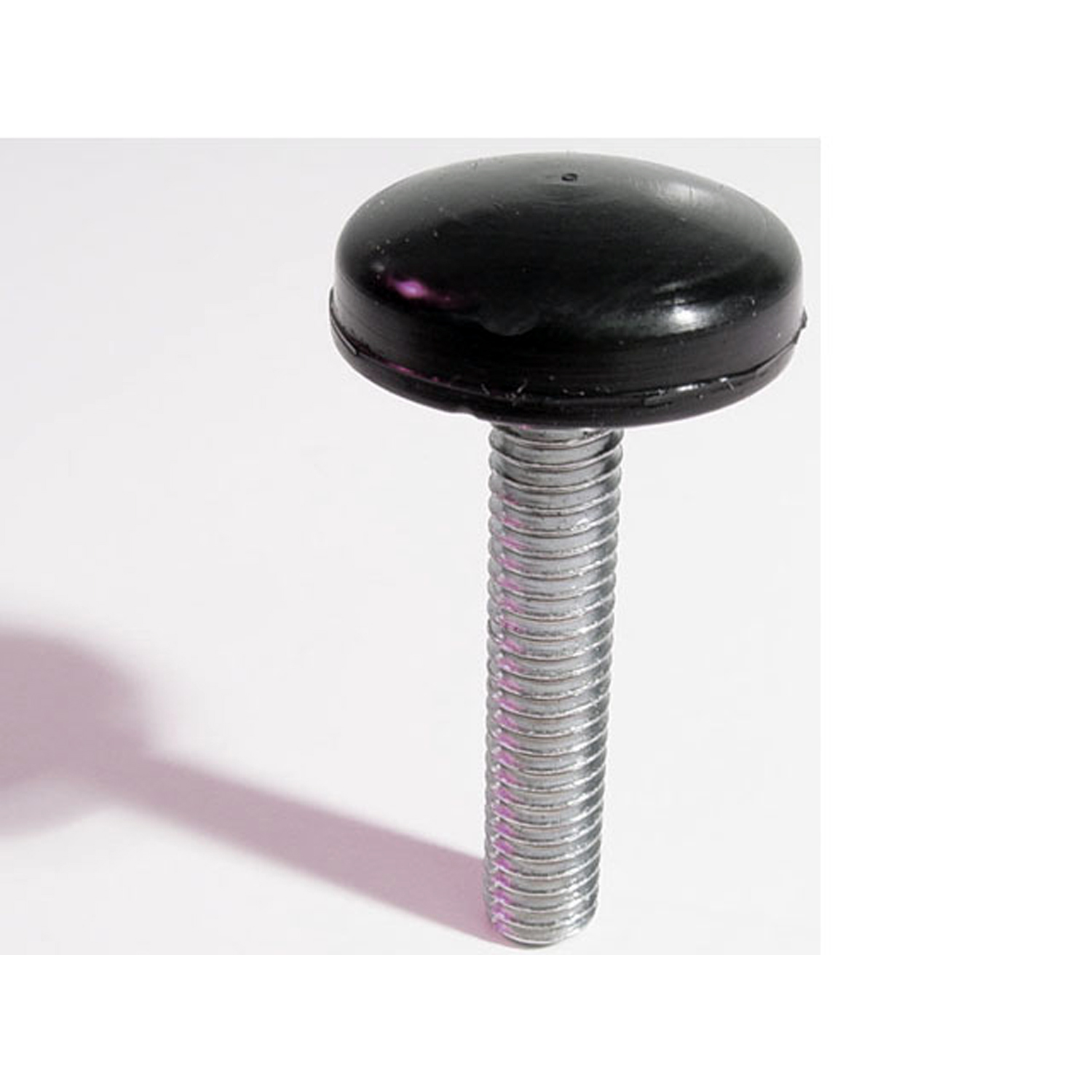 1966 Chevrolet Malibu Hood Adjustment Bolt and Bumper. 1" diameter rubber head-HA 2Hood Adjustment Bolt and Bumper. 1" diameter rubber head. 5/16" thick X 18 threads/inch X 1-3/4" long bolt. Each
1966 Chevrolet Malibu Hood Adjustment Bolt and Bumper. 1" diameter rubber head-HA 2Hood Adjustment Bolt and Bumper. 1" diameter rubber head. 5/16" thick X 18 threads/inch X 1-3/4" long bolt. Each 1966 Chevrolet Malibu Hood Adjustment Bolt and Bumper-HA 3Hood Adjustment Bolt and Bumper. 1-1/8" diameter rubber head. 5/16" thick X 18 threads/inch X 2-1/8" long bolt. Each
1966 Chevrolet Malibu Hood Adjustment Bolt and Bumper-HA 3Hood Adjustment Bolt and Bumper. 1-1/8" diameter rubber head. 5/16" thick X 18 threads/inch X 2-1/8" long bolt. Each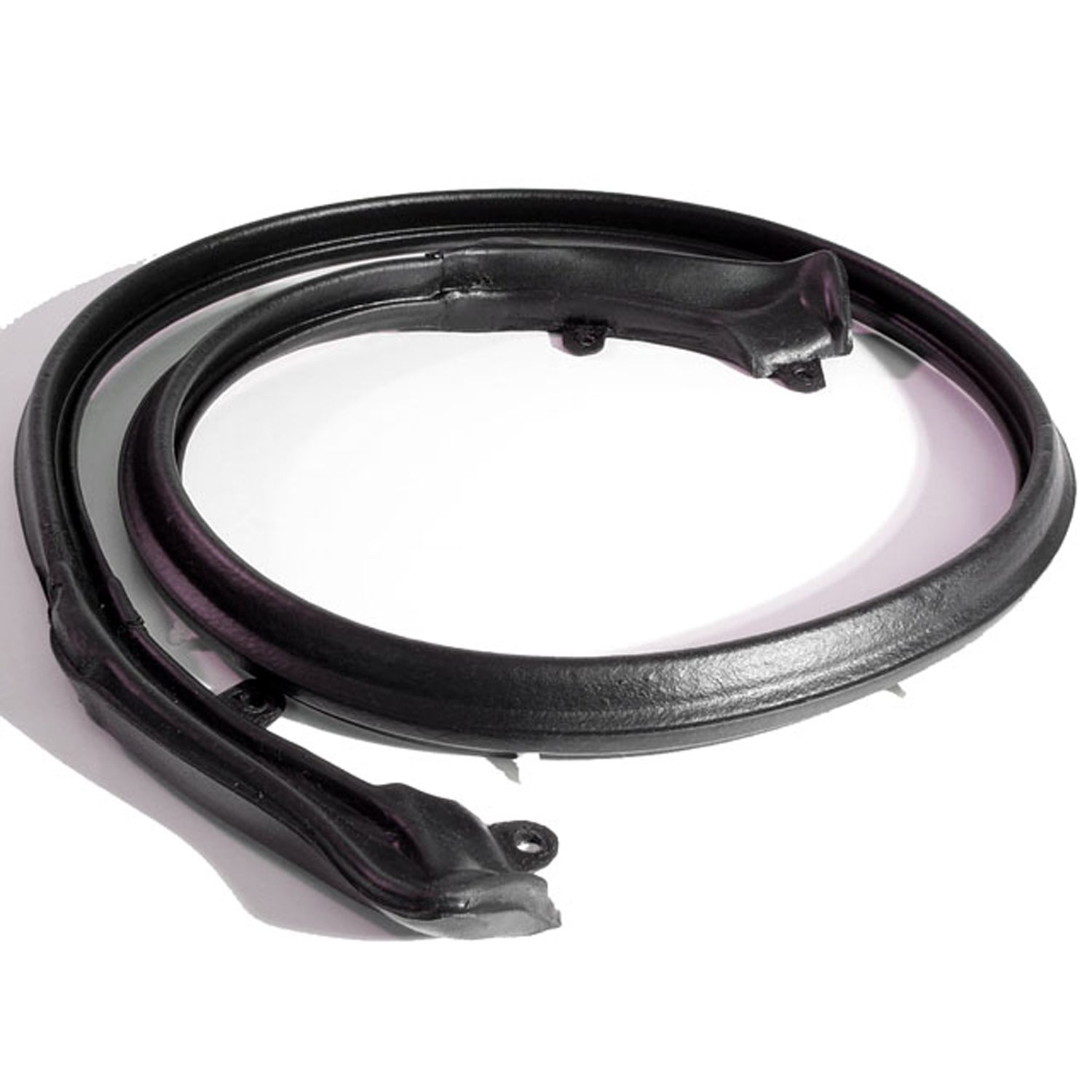 1966 Chevrolet Malibu Top Bow to Header Seal-HD 729Top Bow to Header Seal. Made with steel cores on end, and all clips. 55" Long. Each
1966 Chevrolet Malibu Top Bow to Header Seal-HD 729Top Bow to Header Seal. Made with steel cores on end, and all clips. 55" Long. Each 1966 Chevrolet Malibu Hood Side Bumper. Each-HF 38Hood Side Bumper. Each
1966 Chevrolet Malibu Hood Side Bumper. Each-HF 38Hood Side Bumper. Each 1966 Chevrolet Malibu Hood Bumper. Each-HF 5Hood Bumper. Each
1966 Chevrolet Malibu Hood Bumper. Each-HF 5Hood Bumper. Each 1966 Chevrolet Malibu Rocker Panel Plug. Each-HF 73Rocker Panel Plug. Each
1966 Chevrolet Malibu Rocker Panel Plug. Each-HF 73Rocker Panel Plug. Each 1966 Chevrolet Malibu Trip Meter Reset Knob. Made of black rubber-KN 10Trip Meter Reset Knob. Made of black rubber. Compare to measurements: 1/8" I.D., 7/16" O.D. X 1/2" tall. Each
1966 Chevrolet Malibu Trip Meter Reset Knob. Made of black rubber-KN 10Trip Meter Reset Knob. Made of black rubber. Compare to measurements: 1/8" I.D., 7/16" O.D. X 1/2" tall. Each 1966 Chevrolet Malibu Door Seals, with Clips and Molded Ends-LM 12-JDoor Seals, with Clips and Molded Ends. For 2-Door Hardtops and Convertibles. Pair R&L
1966 Chevrolet Malibu Door Seals, with Clips and Molded Ends-LM 12-JDoor Seals, with Clips and Molded Ends. For 2-Door Hardtops and Convertibles. Pair R&L 1966 Chevrolet Malibu Front Molded Door Seals with Clips-LM 12-PFront Molded Door Seals with Clips. For 4-door sedans and station wagons. Replaces OEM #4540546/7. Each is 124-1/2" long. Pair R&L
1966 Chevrolet Malibu Front Molded Door Seals with Clips-LM 12-PFront Molded Door Seals with Clips. For 4-door sedans and station wagons. Replaces OEM #4540546/7. Each is 124-1/2" long. Pair R&L 1966 Chevrolet Malibu Rear Molded Door Seals with Clips. For 4-door sedans only-LM 12-QRear Molded Door Seals with Clips. For 4-door sedans only. Replaces OEM #4895420/1. Each is 115-1/2" long. Pair R&L
1966 Chevrolet Malibu Rear Molded Door Seals with Clips. For 4-door sedans only-LM 12-QRear Molded Door Seals with Clips. For 4-door sedans only. Replaces OEM #4895420/1. Each is 115-1/2" long. Pair R&L 1966 Chevrolet Malibu Rear Molded Door Seals with Clips-LM 12-Q/WRear Molded Door Seals with Clips. For 4-door station wagons only. Each is 117-1/2" long. Pair R&L
1966 Chevrolet Malibu Rear Molded Door Seals with Clips-LM 12-Q/WRear Molded Door Seals with Clips. For 4-door station wagons only. Each is 117-1/2" long. Pair R&L 1966 Chevrolet Malibu Front Door Seals, for 4-Door Hardtops. 76" Long-LM 12-WFront Door Seals, for 4-Door Hardtops. 76" Long. Pair R & L
1966 Chevrolet Malibu Front Door Seals, for 4-Door Hardtops. 76" Long-LM 12-WFront Door Seals, for 4-Door Hardtops. 76" Long. Pair R & L 1966 Chevrolet Malibu Rear Door Seals, for 4-Door Hardtops. 67-1/2" Long-LM 12-XRear Door Seals, for 4-Door Hardtops. 67-1/2" Long. Pair R&L
1966 Chevrolet Malibu Rear Door Seals, for 4-Door Hardtops. 67-1/2" Long-LM 12-XRear Door Seals, for 4-Door Hardtops. 67-1/2" Long. Pair R&L 1966 Chevrolet Malibu Mounting Pad for Tachometer. 1-1/8" X 2". Each-MP 5Mounting Pad for Tachometer. 1-1/8" X 2". Each
1966 Chevrolet Malibu Mounting Pad for Tachometer. 1-1/8" X 2". Each-MP 5Mounting Pad for Tachometer. 1-1/8" X 2". Each 1966 Chevrolet Malibu Mirror pad. For mirrors with remote control. 1-1/4 in-MP 547-HMirror pad. For mirrors with remote control. 1-1/4 in. W x 5-1/2 in. L. Each.
1966 Chevrolet Malibu Mirror pad. For mirrors with remote control. 1-1/4 in-MP 547-HMirror pad. For mirrors with remote control. 1-1/4 in. W x 5-1/2 in. L. Each. 1966 Chevrolet Malibu Master kit. 2-door hardtop-RK 2003-102Master kit. 2-door hardtop. Molded door seals (LM 12-J), roof-rail seals (RR 5001), trunk seal (TK 46-16), door-lock pillar seals (ALP 5000), door/trunk lock cylinder pads (UM 1600-100), door bumpers (DB 33), hood bumpers (HF 55), rear roll-up seals (VS 3-J), tail-light gaskets (LG 2003-102), park-light gaskets (LG 2003-101), door handle mounting pads (MP 989-D), ashtray/fuel door bumpers (SB 36), and A-arm splash flaps (SI 2003-101).
1966 Chevrolet Malibu Master kit. 2-door hardtop-RK 2003-102Master kit. 2-door hardtop. Molded door seals (LM 12-J), roof-rail seals (RR 5001), trunk seal (TK 46-16), door-lock pillar seals (ALP 5000), door/trunk lock cylinder pads (UM 1600-100), door bumpers (DB 33), hood bumpers (HF 55), rear roll-up seals (VS 3-J), tail-light gaskets (LG 2003-102), park-light gaskets (LG 2003-101), door handle mounting pads (MP 989-D), ashtray/fuel door bumpers (SB 36), and A-arm splash flaps (SI 2003-101). 1966 Chevrolet Malibu Master kit. Convertible-RK 2003-110Master kit. Convertible. Includes molded door seals (LM 12-J), roof-rail seals (RR 1609), pillar-post seals (CZ 8107), trunk seal (TK 46-16), tail-light lens gaskets (LG 2003-102), park-light gaskets (LG 2003-101), door-lock pillar seals (ALP 5000), door/trunk lock cylinder pads (UM 1600-100), door bumpers (DB 33), hood bumpers (HF 55), rear roll-up seals (VS 3-J), door handle mounting pads (MP 989-D), ashtray/fuel door bumpers (SB 36), and A-arm splash flaps (SI 2003-100).
1966 Chevrolet Malibu Master kit. Convertible-RK 2003-110Master kit. Convertible. Includes molded door seals (LM 12-J), roof-rail seals (RR 1609), pillar-post seals (CZ 8107), trunk seal (TK 46-16), tail-light lens gaskets (LG 2003-102), park-light gaskets (LG 2003-101), door-lock pillar seals (ALP 5000), door/trunk lock cylinder pads (UM 1600-100), door bumpers (DB 33), hood bumpers (HF 55), rear roll-up seals (VS 3-J), door handle mounting pads (MP 989-D), ashtray/fuel door bumpers (SB 36), and A-arm splash flaps (SI 2003-100). 1966 Chevrolet Malibu Basic Kit, for 2-Door Hardtop-RKB 2003-102Basic Kit, for 2-Door Hardtop. Door (LM 12-J) Roof Rail (RR 5001) Trunk (TK 46-16), Seals.
1966 Chevrolet Malibu Basic Kit, for 2-Door Hardtop-RKB 2003-102Basic Kit, for 2-Door Hardtop. Door (LM 12-J) Roof Rail (RR 5001) Trunk (TK 46-16), Seals. 1966 Chevrolet Malibu Basic Kit, for Convertibles-RKB 2003-110Basic Kit, for Convertibles. Door (LM 12-J) Roof Rail (RR 1609) Trunk (TK 46-16), Seals.
1966 Chevrolet Malibu Basic Kit, for Convertibles-RKB 2003-110Basic Kit, for Convertibles. Door (LM 12-J) Roof Rail (RR 1609) Trunk (TK 46-16), Seals. 1966 Chevrolet Malibu Basic Kit, for 2-Door Sedan-RKB 2003-111Basic Kit, for 2-Door Sedan. Door (LM 12-R) Trunk (TK 46-16), Seals.
1966 Chevrolet Malibu Basic Kit, for 2-Door Sedan-RKB 2003-111Basic Kit, for 2-Door Sedan. Door (LM 12-R) Trunk (TK 46-16), Seals. 1966 Chevrolet Malibu Sun Visor Support Sleeve. Clear plastic. Each-RP 303-ASun Visor Support Sleeve. Clear plastic. Each
1966 Chevrolet Malibu Sun Visor Support Sleeve. Clear plastic. Each-RP 303-ASun Visor Support Sleeve. Clear plastic. Each 1966 Chevrolet Malibu Sun Visor Rod Rubber Grommet. 3/4" long. Gray. Each-RP 303-CSun Visor Rod Rubber Grommet. 3/4" long. Gray. Each
1966 Chevrolet Malibu Sun Visor Rod Rubber Grommet. 3/4" long. Gray. Each-RP 303-CSun Visor Rod Rubber Grommet. 3/4" long. Gray. Each 1966 Chevrolet Malibu Clutch Arm Fork Boot. Fits on bell housing to keep dirt out-RP 31-DClutch Arm Fork Boot. Fits on bell housing to keep dirt out. Each
1966 Chevrolet Malibu Clutch Arm Fork Boot. Fits on bell housing to keep dirt out-RP 31-DClutch Arm Fork Boot. Fits on bell housing to keep dirt out. Each 1966 Chevrolet Malibu Positive Crankcase Ventilation Grommet-RP 9Positive Crankcase Ventilation Grommet. 11/16" wide X 1-5/8" long, with 15/16" I.D. (Fits some models) Each
1966 Chevrolet Malibu Positive Crankcase Ventilation Grommet-RP 9Positive Crankcase Ventilation Grommet. 11/16" wide X 1-5/8" long, with 15/16" I.D. (Fits some models) Each 1966 Chevrolet Malibu Convertible Top Rail Kit-RR 1609Convertible Top Rail Kit. 7-Piece set includes all right and left side top rail seals and windshield top header seal (HD 729).
1966 Chevrolet Malibu Convertible Top Rail Kit-RR 1609Convertible Top Rail Kit. 7-Piece set includes all right and left side top rail seals and windshield top header seal (HD 729).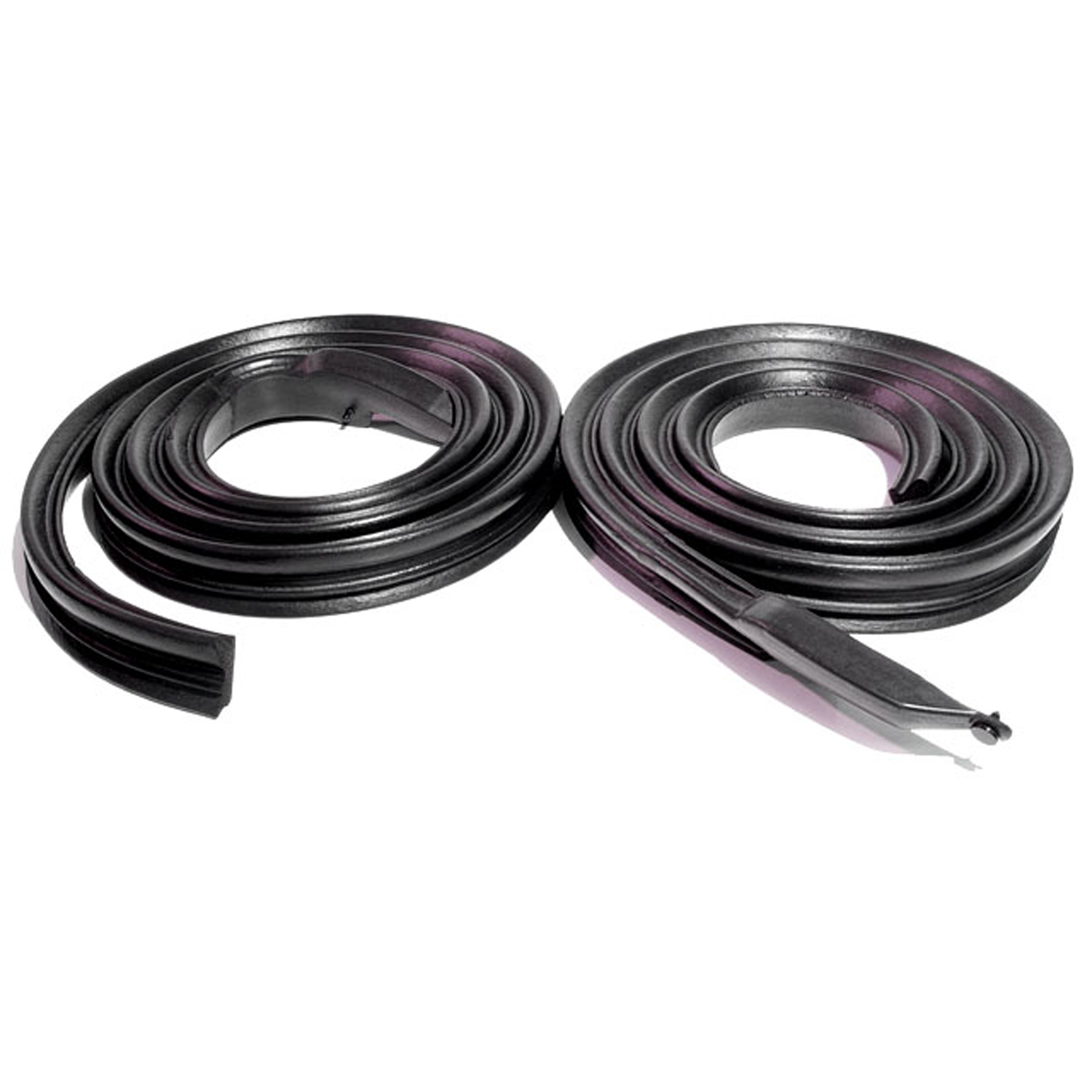 1966 Chevrolet Malibu Molded Roof Rail Seals for 2-Door Hardtop Only. Pair R&L-RR 5001Molded Roof Rail Seals for 2-Door Hardtop Only. Pair R&L
1966 Chevrolet Malibu Molded Roof Rail Seals for 2-Door Hardtop Only. Pair R&L-RR 5001Molded Roof Rail Seals for 2-Door Hardtop Only. Pair R&L 1966 Chevrolet Malibu Molded Roof Rail Seals, for 4-Door Hardtop. Pair R&L-RR 5006Molded Roof Rail Seals, for 4-Door Hardtop. Pair R&L
1966 Chevrolet Malibu Molded Roof Rail Seals, for 4-Door Hardtop. Pair R&L-RR 5006Molded Roof Rail Seals, for 4-Door Hardtop. Pair R&L 1966 Chevrolet Malibu Trunk Bumper. Fits lower corner on decklid. 15/16" O.D-SB 34Trunk Bumper. Fits lower corner on decklid. 15/16" O.D., 11/16" high. Each
1966 Chevrolet Malibu Trunk Bumper. Fits lower corner on decklid. 15/16" O.D-SB 34Trunk Bumper. Fits lower corner on decklid. 15/16" O.D., 11/16" high. Each 1966 Chevrolet Malibu Door Bumper, 57-74 GM Cars, Made with Twin Retainers, Each-SB 35Door Bumper, 57-74 GM Cars, made with twin retainers, Each. Measure 1-1/16" high X 19/32" wide X 1-1/32" long.
1966 Chevrolet Malibu Door Bumper, 57-74 GM Cars, Made with Twin Retainers, Each-SB 35Door Bumper, 57-74 GM Cars, made with twin retainers, Each. Measure 1-1/16" high X 19/32" wide X 1-1/32" long. 1966 Chevrolet Malibu Floor Plug. For under rear seat. Fits a 1" hole. Each-SB 48-AFloor Plug. For under rear seat. Fits a 1" hole. Each
1966 Chevrolet Malibu Floor Plug. For under rear seat. Fits a 1" hole. Each-SB 48-AFloor Plug. For under rear seat. Fits a 1" hole. Each 1966 Chevrolet Malibu Seat Bumper. Made with steel core like original-SB 62-ASeat Bumper. Made with steel core like original. 1-1/2" long, 7/16" thick. Two used per car. Each
1966 Chevrolet Malibu Seat Bumper. Made with steel core like original-SB 62-ASeat Bumper. Made with steel core like original. 1-1/2" long, 7/16" thick. Two used per car. Each 1966 Chevrolet Malibu Clutch Pedal Return Bumper-SB 64Clutch Pedal Return Bumper. 1-13/16" long X 13/16" wide X 7/8" high (center). Each
1966 Chevrolet Malibu Clutch Pedal Return Bumper-SB 64Clutch Pedal Return Bumper. 1-13/16" long X 13/16" wide X 7/8" high (center). Each 1966 Chevrolet Malibu License Plate Bumper. Fits a 1/4" hole. Each-SB 75License Plate Bumper. Fits a 1/4" hole. Each
1966 Chevrolet Malibu License Plate Bumper. Fits a 1/4" hole. Each-SB 75License Plate Bumper. Fits a 1/4" hole. Each 1966 Chevrolet Malibu Glove Box and Fuel Door Bumper. Fits 3/16" hole. Each-SB 78Glove Box and Fuel Door Bumper. Fits 3/16" hole. Each
1966 Chevrolet Malibu Glove Box and Fuel Door Bumper. Fits 3/16" hole. Each-SB 78Glove Box and Fuel Door Bumper. Fits 3/16" hole. Each 1966 Chevrolet Malibu Fuel Door Bumper. 7/8" high, 5/16" O.D. Each-SB 81Fuel Door Bumper. 7/8" high, 5/16" O.D. Each
1966 Chevrolet Malibu Fuel Door Bumper. 7/8" high, 5/16" O.D. Each-SB 81Fuel Door Bumper. 7/8" high, 5/16" O.D. Each 1966 Chevrolet Malibu License Plate Bumper. Fits a 1/4" hole. Each-SB 82License Plate Bumper. Fits a 1/4" hole. Each
1966 Chevrolet Malibu License Plate Bumper. Fits a 1/4" hole. Each-SB 82License Plate Bumper. Fits a 1/4" hole. Each 1966 Chevrolet Malibu Dash and Firewall Grommet. Two hole type. Each-SM 101-ADash and Firewall Grommet. Two hole type. Each
1966 Chevrolet Malibu Dash and Firewall Grommet. Two hole type. Each-SM 101-ADash and Firewall Grommet. Two hole type. Each 1966 Chevrolet Malibu Rocker Arm Cover. Neoprene plug. Fits 1" hole. Each-SM 66Rocker Arm Cover. Neoprene plug. Fits 1" hole. Each
1966 Chevrolet Malibu Rocker Arm Cover. Neoprene plug. Fits 1" hole. Each-SM 66Rocker Arm Cover. Neoprene plug. Fits 1" hole. Each 1966 Chevrolet Malibu Firewall insulation fastener. 1 in. dia. W head. 1-1/2 in. L-SM 80-AFirewall insulation fastener. 1 in. dia. W head. 1-1/2 in. L. Replaces OEM#'s (GM) 7642589 and (AMC) 4001934. Black. Each.
1966 Chevrolet Malibu Firewall insulation fastener. 1 in. dia. W head. 1-1/2 in. L-SM 80-AFirewall insulation fastener. 1 in. dia. W head. 1-1/2 in. L. Replaces OEM#'s (GM) 7642589 and (AMC) 4001934. Black. Each. 1966 Chevrolet Malibu Station Wagon Tailgate Seal. 91-1/2" long. Each-TG 14Station Wagon Tailgate Seal. 91-1/2" long. Each
1966 Chevrolet Malibu Station Wagon Tailgate Seal. 91-1/2" long. Each-TG 14Station Wagon Tailgate Seal. 91-1/2" long. Each 1966 Chevrolet Malibu Trunk Seal. 16 feet long. Each-TK 46-16Trunk Seal. 16 feet long. Each
1966 Chevrolet Malibu Trunk Seal. 16 feet long. Each-TK 46-16Trunk Seal. 16 feet long. Each 1966 Chevrolet Malibu Unbeaded Door and Trunk Lock Gasket. 1-3/16" O.D., 7/8" I.D-UM 1600-100Unbeaded Door and Trunk Lock Gasket. 1-3/16" O.D., 7/8" I.D. Each
1966 Chevrolet Malibu Unbeaded Door and Trunk Lock Gasket. 1-3/16" O.D., 7/8" I.D-UM 1600-100Unbeaded Door and Trunk Lock Gasket. 1-3/16" O.D., 7/8" I.D. Each 1966 Chevrolet Malibu Unbeaded Door Handle Mounting Pads. 4-Piece Set-UM 2005-100Unbeaded Door Handle Mounting Pads. 4-Piece Set
1966 Chevrolet Malibu Unbeaded Door Handle Mounting Pads. 4-Piece Set-UM 2005-100Unbeaded Door Handle Mounting Pads. 4-Piece Set 1966 Chevrolet Malibu Vertical glass run channel-VR 2009Vertical glass run channel. Fits in division bar channel between front vent window and leading edge of window glass in door. 37 in. long. Pair.
1966 Chevrolet Malibu Vertical glass run channel-VR 2009Vertical glass run channel. Fits in division bar channel between front vent window and leading edge of window glass in door. 37 in. long. Pair. 1966 Chevrolet Malibu Rear Side Roll-Up Window Seal, for Hardtops and Convertibles-VS 3Rear Side Roll-Up Window Seal, for Hardtops and Convertibles. Two 20" sections slide into metal track. No steel insert. Pair
1966 Chevrolet Malibu Rear Side Roll-Up Window Seal, for Hardtops and Convertibles-VS 3Rear Side Roll-Up Window Seal, for Hardtops and Convertibles. Two 20" sections slide into metal track. No steel insert. Pair 1966 Chevrolet Malibu Rear Roll-Up Window Seals-VS 3-JRear Roll-Up Window Seals, for 2-Door Hardtops and Convertibles. Made with steel cores. 14-3/4" long. Pair
1966 Chevrolet Malibu Rear Roll-Up Window Seals-VS 3-JRear Roll-Up Window Seals, for 2-Door Hardtops and Convertibles. Made with steel cores. 14-3/4" long. Pair 1966 Chevrolet Malibu Window sweeper kit. Fits 2-door hardtop-WC 2003-20Window sweeper kit. Fits 2-door hardtop. OEM-replacement kit with chrome bead and fuzzy sweepers with proper clips ready to install. 8-piece set includes two front inner and two front outer sweeps, two rear inner and two rear outer sweeps.
1966 Chevrolet Malibu Window sweeper kit. Fits 2-door hardtop-WC 2003-20Window sweeper kit. Fits 2-door hardtop. OEM-replacement kit with chrome bead and fuzzy sweepers with proper clips ready to install. 8-piece set includes two front inner and two front outer sweeps, two rear inner and two rear outer sweeps. 1966 Chevrolet Malibu Window sweeper kit. Fits convertible-WC 2003-23Window sweeper kit. Fits convertible. OEM-replacement kit with chrome bead and fuzzy sweepers with proper clips ready to install. 8-piece set includes two front inner and two front outer sweeps, two rear inner and two rear outer sweeps.
1966 Chevrolet Malibu Window sweeper kit. Fits convertible-WC 2003-23Window sweeper kit. Fits convertible. OEM-replacement kit with chrome bead and fuzzy sweepers with proper clips ready to install. 8-piece set includes two front inner and two front outer sweeps, two rear inner and two rear outer sweeps. 1966 Chevrolet Malibu Window sweeper kit. Fits El Camino and 2-door station wagon-WC 2003-33Window sweeper kit. Fits El Camino and 2-door station wagon. OEM-replacement kit with chrome bead and fuzzy sweepers with proper clips ready to install. 4-piece set includes two front inner and two front outer sweeps.
1966 Chevrolet Malibu Window sweeper kit. Fits El Camino and 2-door station wagon-WC 2003-33Window sweeper kit. Fits El Camino and 2-door station wagon. OEM-replacement kit with chrome bead and fuzzy sweepers with proper clips ready to install. 4-piece set includes two front inner and two front outer sweeps. 1966 Chevrolet Malibu Quarter Window Reveal Molding Clip. Made of Steel-WF 205Quarter Window Reveal Molding Clip. Made of Steel. 1-3/8" X 11/16". Each
1966 Chevrolet Malibu Quarter Window Reveal Molding Clip. Made of Steel-WF 205Quarter Window Reveal Molding Clip. Made of Steel. 1-3/8" X 11/16". Each 1966 Chevrolet Malibu Rear Window Reveal Molding Clip. For Station Wagons-WF 208Rear Window Reveal Molding Clip. For Station Wagons. Made of steel. 5/8" x 3/4". Each
1966 Chevrolet Malibu Rear Window Reveal Molding Clip. For Station Wagons-WF 208Rear Window Reveal Molding Clip. For Station Wagons. Made of steel. 5/8" x 3/4". Each 1966 Chevrolet Malibu Vent window seals. 2-door hardtop and convertible-WR 2009Vent window seals. 2-door hardtop and convertible. Replaces OEM#'s 9706596/7. Pair. R&L.
1966 Chevrolet Malibu Vent window seals. 2-door hardtop and convertible-WR 2009Vent window seals. 2-door hardtop and convertible. Replaces OEM#'s 9706596/7. Pair. R&L. 1966 Chevrolet Malibu Vent window seals-WR 2011Vent window seals. Fits '64-'67 GM A-body 2-door and 4-door sedan and station wagon (including El Camino). Replaces OEM#'s 5717252/3. Pair. R&L.
1966 Chevrolet Malibu Vent window seals-WR 2011Vent window seals. Fits '64-'67 GM A-body 2-door and 4-door sedan and station wagon (including El Camino). Replaces OEM#'s 5717252/3. Pair. R&L. 1966 Chevrolet Malibu Front Suspension Bumper. For steering knuckle support-XB 20Front Suspension Bumper. For steering knuckle support. 1-3/8" high. Each
1966 Chevrolet Malibu Front Suspension Bumper. For steering knuckle support-XB 20Front Suspension Bumper. For steering knuckle support. 1-3/8" high. Each 1966 Chevrolet Malibu Rear Axle Housing Bumper. Each-XB 33Rear Axle Housing Bumper. Each
1966 Chevrolet Malibu Rear Axle Housing Bumper. Each-XB 33Rear Axle Housing Bumper. Each 1966 Chevrolet Malibu Rear Spring Insulators. 8-1/4" O.D., 6-5/8" I.D. Pair-XB 355Rear Spring Insulators. 8-1/4" O.D., 6-5/8" I.D. Pair
1966 Chevrolet Malibu Rear Spring Insulators. 8-1/4" O.D., 6-5/8" I.D. Pair-XB 355Rear Spring Insulators. 8-1/4" O.D., 6-5/8" I.D. PairWhy Choose Metro?
For over 100 years, Metro Moulded Parts has been the pinnacle of quality in classic car restoration parts. Our commitment to precision and authenticity in every component ensures a perfect fit and an OEM-level appearance.
- Expert Craftsmanship & Quality: Each part is a testament to our dedication to reliability and perfection, crafted from original designs and thoroughly tested.
- Advanced Technology: We use cutting-edge techniques to create flawless, long-lasting parts that surpass others in performance.
- SuperSoft Sponge – The Ultimate Door Seal: Not only are our door seals 30% softer than competitors', but they're also guaranteed to never leak. They effectively reduce wind and road noise, enhancing your classic car's comfort and driving experience.
- Proudly American: Our parts are a product of American craftsmanship, made in the USA with a spirit of excellence and heritage.
- Unrivaled Warranty: We back our products with a 30-year industry-leading warranty, a testament to our confidence in their quality.
Join us in preserving the legacy of classic cars with parts that are crafted for perfection, not just made.

